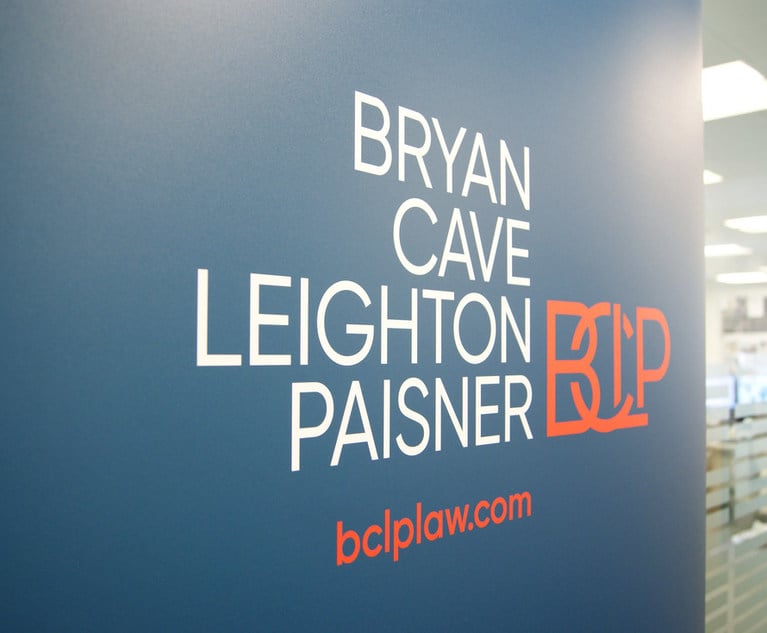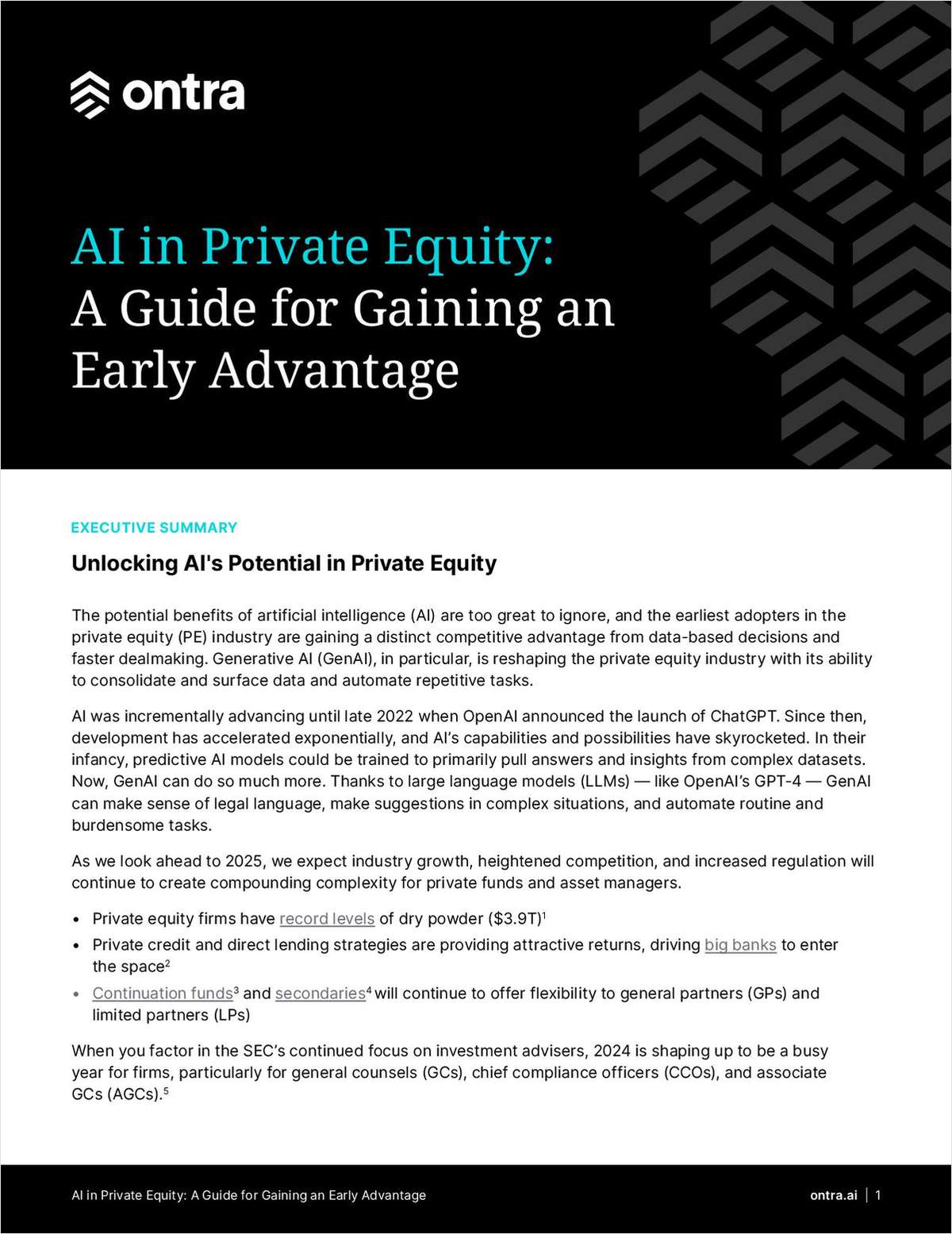Following an uncertain path – analysing 2014's UK top 30 partner promotions
Long office hours and the need for almost surgical attachment to a BlackBerry or other smartphone mean even the lure of potential seven-figure salaries is increasingly failing to persuade younger lawyers that partnership represents the holy grail of their career.
May 29, 2014 at 05:31 AM
9 minute read
Ongoing fears that partnership is losing its lustre have been tempered by a rise in global promotions and a marked increase in female appointments. Pui-Guan Man analyses the first round of partner promotions at the UK top 30 since HMRC's tax clampdown on the salaried ranks
Long office hours and the need for almost surgical attachment to a BlackBerry or other smartphone mean even the lure of potential seven-figure salaries is increasingly failing to persuade younger lawyers that partnership represents the holy grail of their career.
Given the relatively small odds of making partner it is an understandable stance for the junior ranks to take. After all, while partner promotions at the 30 largest UK law firms by revenue soared by 17% year-on-year globally in 2014, the impact of the recession means this comes off a fairly low base, with new partner promotions across the group barely higher than in 2012, even allowing for a number of mergers.
The fact the new partner cohort in 2014 equates to under 4% of firms' total partnership size for the previous year suggests in reality that firms' promotions are not keeping pace with partner retirement or natural attrition.
New rules from HM Revenue & Customs (HMRC) intended to crack down on the practice of limited liability partnerships (LLPs) avoiding national insurance contributions for salaried and fixed-share partners are unlikely to improve the situation, as junior partners will now often be required to put in hefty capital contributions to maintain their status.
Numerous firms have been forced to make changes to bring themselves in line with the regulations, with CMS Cameron McKenna and Hogan Lovells among those asking salaried partners to significantly up their capital contributions – the former asking 90 junior partners to put in up to £50,000 and the latter calling on 65 to pay in up to £100,000.
With non-equity partners facing a higher degree of uncertainty in their earnings, some firms, such as Eversheds, Holman Fenwick Willan and Nabarro, have tried to counterbalance changes to their income with additional voting rights for their junior partners. The question though is whether this will be enough to maintain the draw of partnership for the best of the younger generation.
Smith & Williamson private client tax partner Pamela Sayers believes that the tax changes will undoubtedly have an impact on whether junior lawyers will opt to spurn the partnership track, especially given the "growing nervousness" among professional services firms that HMRC could make even more onerous changes.
"A firm's decision on whether to change its profit-share arrangements in the short to medium term results in uncertainty for a person on what their income will be, putting off junior lawyers who might be looking to move house or take out a mortgage at the stage where they might be promoted," comments Sayers. "While firms are generally suffering from ennui from the growing lack of attractiveness of partnership, the HMRC changes have exacerbated the situation."
But because firms do not have any say in whether or not to meet the new capital requirements, senior partners are hoping that, despite the increased financial burden many will face, partnership will not lose even more of its shine for prospective candidates.

Charles Martin, senior partner at Macfarlanes, which has responded to the tax changes by putting "minor adjustments" in place, says: "I certainly hope for the sake of the profession that HMRC's tax changes will not alter partnership selection or prospects. Firms will have responded to the changes in different ways, but any firm that is concerned with ensuring the future vitality of its practice will want to ensure the partnership remains an attractive prospect for its very best lawyers.
"This is true not just of compensation, but also of the wider partnership package, including opportunities for engagement with the practice and the longer-term prospects of the firm. For our part, the prospect of becoming a partner remains a highly attractive prospect to those senior associates who are on track towards it."
Herbert Smith Freehills (HSF) UK and US managing partner Ian Cox adds: "I would be surprised if HMRC's changes would deter anyone who wants to be a partner. I don't think it is a decision that is influenced by how much capital partners are asked to put in. From a management perspective, partners are promoted with a view to them being a partner for a long time."
———————————————————————————————————————————-
- How attractive are your firm's benefits? Click here to provide confidential feedback in Legal Week Intelligence's annual employee satisfaction survey.
———————————————————————————————————————————-
Global prospects
Despite the potentially demotivating nature of HMRC's guidelines, the first promotions round since firms were informed of the changes is – at first glance – positive. Total partner promotions across the 27 top 30 firms to have announced their 2014 promotions to date stands at 432 globally in 2014, compared with 370 in 2013 – representing a year-on-year increase of 17%. This contrasts with a 9.5% dip in 2013 from the previous year's total of 405.
Confidence in the City saw a particularly strong comeback, as the UK market shows tentative signs of recovery. Promotions in London made up nearly a third (31%) of global promotions, increasing by 35% on last year's equivalent to account for 135 new partners, compared with 100 in 2013.
HSF and Hogan Lovells promoted the highest number of lawyers in the City among the top 30, adding 11 new partners each. For the former, its London promotions represented nearly half (48%) of its overall round this year.
"The transactional markets have been returning in the UK in the last 12 months," explains Cox. "The growing health of our transactional practices means we have more confidence across the board as well as in the health of the firm's business in London."
In contrast to the general trend towards larger promotion rounds, nine firms in the group made up fewer new partners in 2014 compared with 2013: Linklaters, Allen & Overy (A&O), Eversheds, Berwin Leighton Paisner (BLP), Irwin Mitchell, Holman Fenwick Willan, Kennedys, Nabarro and Stephenson Harwood. For two of this group – A&O and BLP – the reduction is the second in a row, while four – Eversheds, Holman Fenwick, Nabarro and Stephenson Harwood – are among those known to have called on their fixed-share partners to inject capital.
While most firms have ramped up investment in their London offices compared with last year, they have decreased promotions across Continental Europe, the Middle East and Africa by 18%, with total promotions here falling from 133 to 109.
As a percentage this region equates to a quarter of global promotions; however, EMEA (outside the UK) promotions fell by 34% year-on-year at the magic circle.
Instead, many of the UK's largest firms are continuing to look to the East for growth opportunities, with new partner appointments in Asia growing by 31%. New partners in Asia accounted for 11% of total promotions in 2014, with the region gaining 46 new partners and Australia securing a further 28. The figure is boosted in particular by promotions at newly merged King & Wood Mallesons SJ Berwin (KWM), with its Chinese arm making up 10 lawyers in April. Promotions at KWM include the Australia member firm's appointments, which took effect last July.
The tally in Asia is only just behind the US, where there were 49 promotions. While the figures include those in the US arm of Norton Rose Fulbright in its first post-merger promotion round, as well as several other transatlantic firms such as DLA Piper, those with home-grown stateside presences such as Linklaters, A&O and Ashurst have also shown commitment to bulking up in the region, with the former promoting two partners and the latter firms making up one each.

Thirty percent club
This year's round suggests that after a disappointing performance in 2013 when the number of women making the grade fell significantly, efforts to boost gender diversity at the UK's leading law firms appear to be paying off. The number of women made up to partner this year climbed by 30%, with the group making up 129 female partners in total in 2014, equating to 30% of the global total. This compares with 99 female partners in 2013 and 123 in 2012.
Among the group, slightly more than one third of the UK top 30 announced rounds that were at least 30% female. The 11 firms in question include magic circle firms Clifford Chance, where female lawyers account for 33% of its 2014 round, and Linklaters (43%). Irwin Mitchell posted the highest female proportion with 60%, followed by DAC Beachcroft and Slaughter and May (56%), Norton Rose Fulbright (43%) and HSF (35%).
"There has been a general trend where firms are becoming better at identifying and encouraging people right across their talent pool," says Linklaters corporate partner Vanessa Havard-Williams. "We have introduced a women's leadership programme that gives women with a lot of potential support and advice to develop their career in law, and the aim is that this will help us to lose fewer women further down the line."
Reality check
But despite the positives of the 2014 round, the challenges for firms to overcome are readily apparent. With homegrown talent trickling into many firms at rates that do not match partner attrition, there are questions as to whether firms will be able to attract and retain enough of the best candidates to manage succession.
As partner promotions as a percentage of global partnership count figures suggest, firms face the wider challenge of keeping their junior talent engaged in the face of an intensifying focus on reward and job satisfaction, as well as risk.
"I think [the shift in mindset away from partnership] is down to a mix of work-life balance and tougher criteria for partnership, since international legal work has become more demanding than ever – clients now expect service around the clock," comments Cox.
"We are doing what we can to make partnership as palatable as possible, but the pressures of partnership are not for everyone, which in turn is not necessarily a bad thing."
The research excludes DWF, which makes partnership promotions in November, and Withers and Hill Dickinson, both of which promote their partners in June.
This content has been archived. It is available through our partners, LexisNexis® and Bloomberg Law.
To view this content, please continue to their sites.
Not a Lexis Subscriber?
Subscribe Now
Not a Bloomberg Law Subscriber?
Subscribe Now
NOT FOR REPRINT
© 2024 ALM Global, LLC, All Rights Reserved. Request academic re-use from www.copyright.com. All other uses, submit a request to [email protected]. For more information visit Asset & Logo Licensing.
You Might Like
View All
Trump and Latin America: Lawyers Brace for Hard-Line Approach to Region

BCLP Mulls Merger Prospects as Profitability Lags, Partnership Shrinks

Trending Stories
- 15th Circuit Rules Open-Source Code Is Not Property in Tornado Cash Appeal
- 2Mediators for the Southern District of New York Honored at Eighth Annual James Duane Awards
- 3The Lawyers Picked by Trump for Key Roles in His Second Term
- 4Pa. High Court to Weigh Parent Company's Liability for Dissolved Subsidiary's Conduct
- 5Depo-Provera MDL Could Be Headed to California
Who Got The Work
Michael G. Bongiorno, Andrew Scott Dulberg and Elizabeth E. Driscoll from Wilmer Cutler Pickering Hale and Dorr have stepped in to represent Symbotic Inc., an A.I.-enabled technology platform that focuses on increasing supply chain efficiency, and other defendants in a pending shareholder derivative lawsuit. The case, filed Oct. 2 in Massachusetts District Court by the Brown Law Firm on behalf of Stephen Austen, accuses certain officers and directors of misleading investors in regard to Symbotic's potential for margin growth by failing to disclose that the company was not equipped to timely deploy its systems or manage expenses through project delays. The case, assigned to U.S. District Judge Nathaniel M. Gorton, is 1:24-cv-12522, Austen v. Cohen et al.
Who Got The Work
Edmund Polubinski and Marie Killmond of Davis Polk & Wardwell have entered appearances for data platform software development company MongoDB and other defendants in a pending shareholder derivative lawsuit. The action, filed Oct. 7 in New York Southern District Court by the Brown Law Firm, accuses the company's directors and/or officers of falsely expressing confidence in the company’s restructuring of its sales incentive plan and downplaying the severity of decreases in its upfront commitments. The case is 1:24-cv-07594, Roy v. Ittycheria et al.
Who Got The Work
Amy O. Bruchs and Kurt F. Ellison of Michael Best & Friedrich have entered appearances for Epic Systems Corp. in a pending employment discrimination lawsuit. The suit was filed Sept. 7 in Wisconsin Western District Court by Levine Eisberner LLC and Siri & Glimstad on behalf of a project manager who claims that he was wrongfully terminated after applying for a religious exemption to the defendant's COVID-19 vaccine mandate. The case, assigned to U.S. Magistrate Judge Anita Marie Boor, is 3:24-cv-00630, Secker, Nathan v. Epic Systems Corporation.
Who Got The Work
David X. Sullivan, Thomas J. Finn and Gregory A. Hall from McCarter & English have entered appearances for Sunrun Installation Services in a pending civil rights lawsuit. The complaint was filed Sept. 4 in Connecticut District Court by attorney Robert M. Berke on behalf of former employee George Edward Steins, who was arrested and charged with employing an unregistered home improvement salesperson. The complaint alleges that had Sunrun informed the Connecticut Department of Consumer Protection that the plaintiff's employment had ended in 2017 and that he no longer held Sunrun's home improvement contractor license, he would not have been hit with charges, which were dismissed in May 2024. The case, assigned to U.S. District Judge Jeffrey A. Meyer, is 3:24-cv-01423, Steins v. Sunrun, Inc. et al.
Who Got The Work
Greenberg Traurig shareholder Joshua L. Raskin has entered an appearance for boohoo.com UK Ltd. in a pending patent infringement lawsuit. The suit, filed Sept. 3 in Texas Eastern District Court by Rozier Hardt McDonough on behalf of Alto Dynamics, asserts five patents related to an online shopping platform. The case, assigned to U.S. District Judge Rodney Gilstrap, is 2:24-cv-00719, Alto Dynamics, LLC v. boohoo.com UK Limited.
Featured Firms
Law Offices of Gary Martin Hays & Associates, P.C.
(470) 294-1674
Law Offices of Mark E. Salomone
(857) 444-6468
Smith & Hassler
(713) 739-1250










